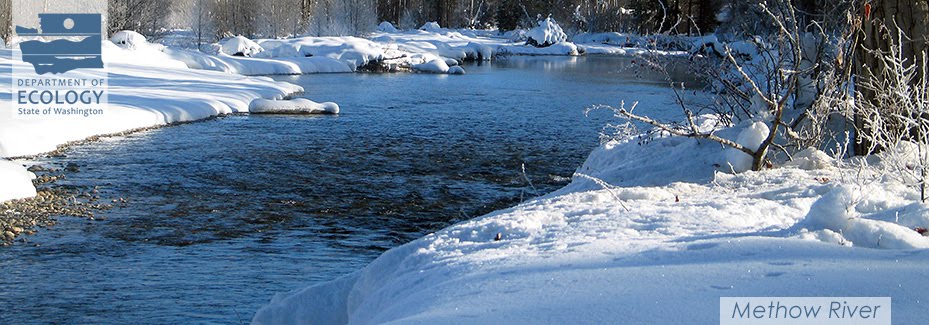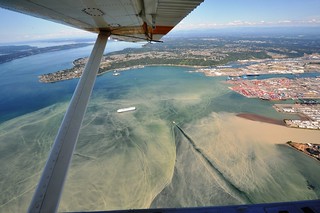Eat your peas
Imagine yourself in a nice restaurant with a delicious-looking batch of steamed oysters in front of you. You insert your knife, pop open the shell, and right before you devour your prize, you discover that your oyster has a tiny crab as a houseguest!
 |
| Male Fabia subquadrata, a species of pea crab found in Puget Sound |
These little stowaways are called pea crabs, so named because many of them are small (most are less than a cm wide) and round. In the southeastern US, pea crabs are a common sight inside oysters, even considered by some to be a delicacy. This is a sight you won’t often see on the west coast, although plenty of pea crabs are found here. Scientists hypothesize that cold water temperatures or the way shellfish are grown on the west coast might play a role in controlling the number of oysters inhabited by crabs.
Hostess with the mostest
 |
| Pinnixa schmitti, the most common Puget Sound pea crab |
The pea crabs of the Pacific Northwest have a wide range of hosts – each species has one (or several) favorite organisms that it prefers to shack up with, and they aren’t just bivalves. Mating pairs of
Pinnixa tubicola, for example, are often found in the tubes of certain species of polychaetes (marine segmented worms).
The most common Puget Sound pea crab,
Pinnixa schmitti, likes to hang out in the burrows of ghost shrimp and echiurans (spoon worms), where it feeds on detritus and leftovers from its host. Many pea crabs can also filter feed if needed, but why pass up a free meal?
Two (or more) peas in a pod
Scleroplax granulata, another Puget Sound species, also chooses ghost shrimp as one of its hosts. Up to six crabs can squeeze into a single ghost shrimp burrow but the crab usually prefers just its host as a roommate. It can also move from burrow to burrow if it finds that the accommodations are better elsewhere.
S. granulata may play host to its own freeloading organism as well - a bryozoan (tiny colonial invertebrate) that grows on its shell or lives inside its gill cavity.
Wearing out your welcome
These types of relationships are symbiotic, or an association between two organisms. In the case of pea crabs, many of them are not well understood. In most cases, the symbiosis seems to be commensal; that is, one animal (the crab) benefits from the shelter and food provided by its host, and the host is not affected one way or another by the crab’s tenancy.
 |
Fabia subquadrata inside the mussel Mytilus sp.
Photo courtesy of Aaron Baldwin,
Alaska Department of Fish and Game |
In some cases, however, it appears that pea crabs do have a harmful effect on their hosts in a form of unintentional parasitism.
Fabia subquadrata, the grooved mussel crab, lives the majority of its life inside a mussel or other bivalve, only leaving its host to find a mate. The female then re-enters the host and produces an egg mass that is almost the size of her body.
Over time, the presence of this sharp-clawed foreign object is thought to erode the gills of the mussel. Eventually the crab larvae will hatch out, each finding a mussel of its own to squat in.
Rule of thumb
 |
The chelipeds of Pinnixa schmitti (left) and P. occidentalis (right)
have a different shape that helps taxonomists distinguish the two species. |
Identifying pea crabs can be tricky because they are so small, and they often don’t have a lot of distinct features to examine. Some of the more reliable characters that taxonomists use to determine the species are the shape of the carapace (shell), the size of the walking legs, and the shape and dentition of the chelipeds (claws).
For example,
Pinnixa schmitti has a cheliped with a straight fixed “finger” while the similar-looking
P. occidentalis has a finger that is deflexed in a sort of permanent “thumbs down.”
 |
P. schmitti male (top) and female (bottom).
Arrows indicate the abdomen, which can be used to
differentiate between the sexes. |
Peas and love
Telling male and female crabs apart may seem like an impossible task when they are so tiny, but there is an easy trick that applies to many crab species. If you turn a crab over and look at the bottom side, you will see where its abdomen wraps around under its carapace. The female crab has a wide, rounded abdomen, because she uses it to carry her egg mass. Males have a much narrower abdomen.
Critter of the Month
Our benthic taxonomists, Dany and Angela, share their discoveries by bringing us a Benthic
Critter of the Month. Dany and Angela are scientists who work for the
Marine Sediment Monitoring Program. These posts will give you a peek into the life of Puget Sound’s least-known inhabitants.
In each issue we will highlight one of the Sound’s many fascinating invertebrates. We’ll share details on identification, habitat, life history, and the role this critter plays in the sediment community. Can't get enough benthos? See photos from our
Eyes Under Puget Sound collection on Flickr. Look for the
Critter of the Month on our blog.
By: Dany Burgess & Angela Eagleston, Environmental Assessment Program




























